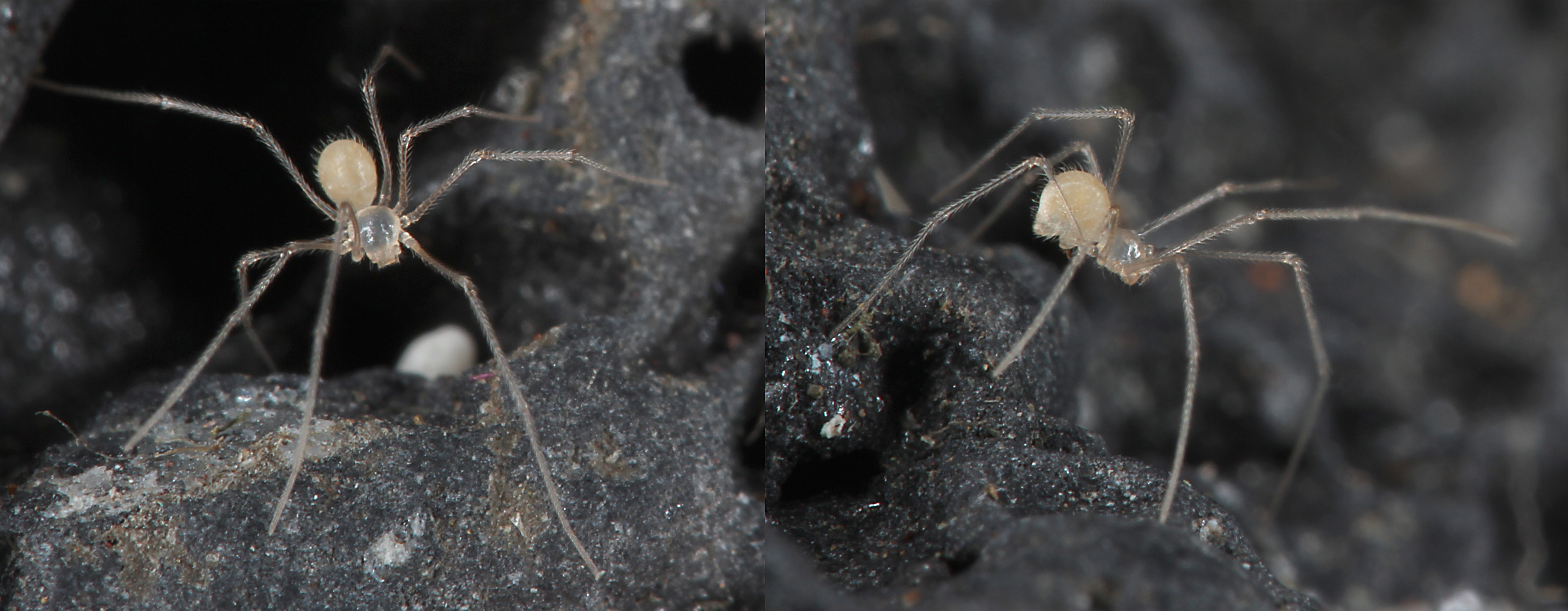Here we describe the two new epigean species, a new blind species that it among the smallest pholcids known, and redescribe both previously known cave species. We add all five species to the recently published molecular phylogeny of Pholcidae, together with more than 30 further congeners from the mainland.

The newly described, entirely blind Metagonia zatoichi, from lava tubes in the highland of Santa Cruz Island.
Our analyses of molecular data consistently resolve all Galápagos Metagonia together as a monophyletic group, divided into an epigean clade and a hypogean clade. Each species is restricted to an individual island (Isabela or Santa Cruz; with one possible exception), suggesting that the epigean Metagonia species are native rather than introduced.